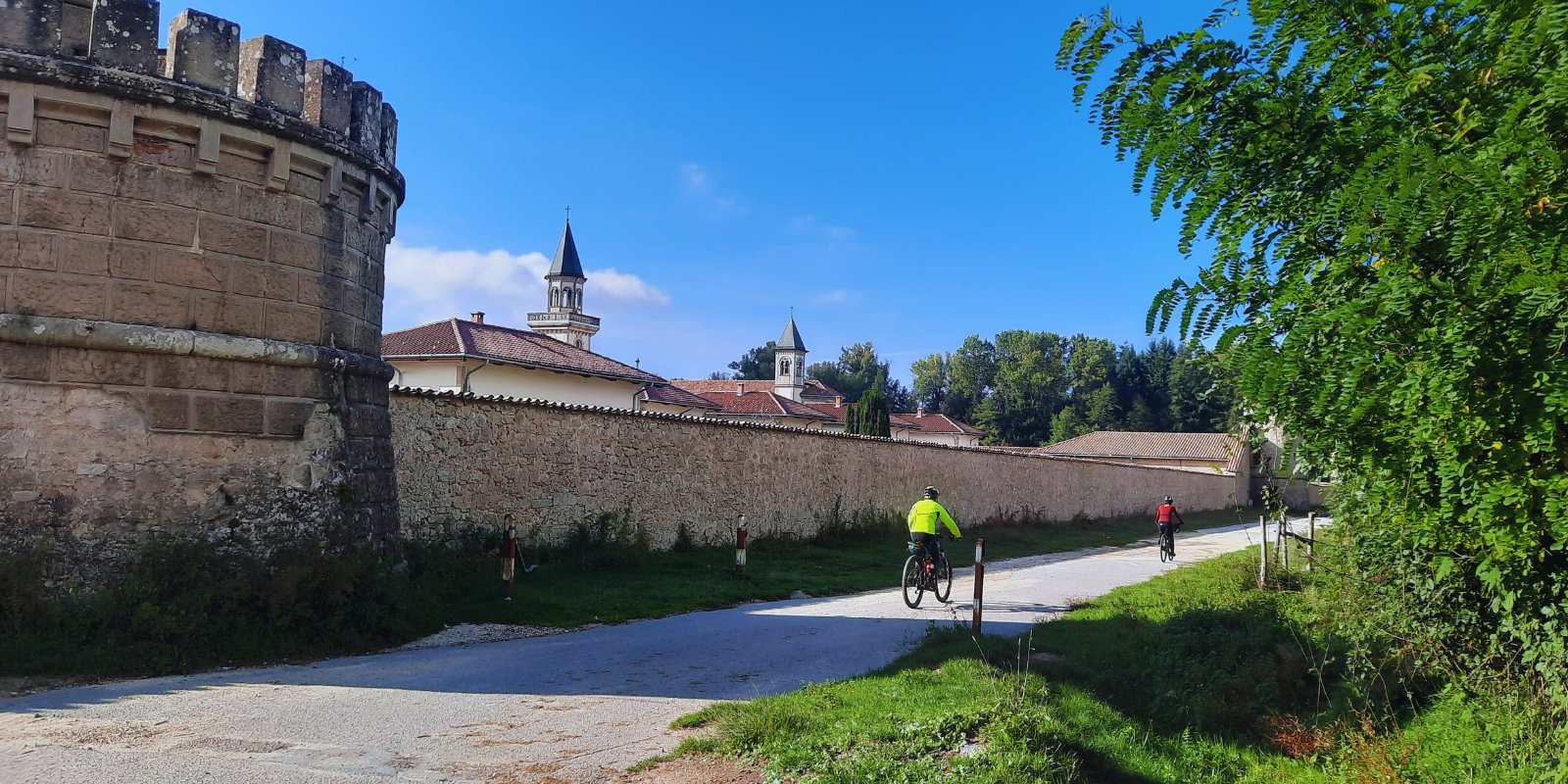545 KILOMETRES OF OPEN-AIR WONDER: THIS IS THE PARKS CYCLE PATH OF CALABRIA
Perched villages, dense woods and forests, high-altitude lakes, ancient beech forests, UNESCO World Heritage Geosites, scattered museums, diverse cultures and dialects, unique agri-food and gastronomic traditions—these are just some of the ingredients that the Parks Cycle Path of Calabria offers to cycling enthusiasts who love to connect with places and fully experience the journey.
The cycle path runs longitudinally through the most "intimate" and authentic parts of Calabria, enjoying the presence of four extraordinary protected areas covering over 300,000 hectares: from Laino Borgo, in the heart of the Pollino National Park, to Reggio Calabria, crossing the Sila, Serre, and Aspromonte parks. The cycle path follows the Apennine ridges, allowing frequent views of the sea to the east and west—a unique allure that only Calabria can offer.

The infrastructure mostly runs on low-traffic asphalt roads, with several exclusive sections built on the route of the former Calabro-Lucanian railway, in the north, within the Pollino National Park, or along the lakes that mark the landscape of Sila and Serre. The Calabria region and the parks have placed great emphasis on this infrastructure to revitalize the inland areas. In 2021, it was awarded the "Italian Green Road Award" for cycling tourism, sharing first place with the Autonomous Province of Trento.
Starting from the north, from Laino Borgo, the first park you encounter is the Pollino, Italy's largest protected area. Since 2015, it has been a UNESCO Global Geopark with 75 Geosites. Here stands Italus, the oldest living tree in Europe, a monumental loricato pine that is 1,230 years old. The park also features two ancient beech forests, also recognized as World Heritage sites. Cycling through these majestic mountains, with peaks over 2,000 meters, offers a unique experience. You can reach Mormanno, Morano Calabro—two of Italy's most beautiful villages—the Arbëreshë ethnic towns, and the historic centre of Castrovillari. You can also visit the Romito Cave in Papasidero to see the bos primigenius cave art, among the most significant evidence of Homo sapiens communities in Italy.
Continuing southward, you descend towards Tarsia, located almost at sea level, where the Ferramonti Memory Museum is located, recounting the story of Italy's largest fascist concentration camp. Then, you climb towards Bisignano, where some of the best ceramists and luthiers in Calabria are still active.
From there, you ascend to Acri, reaching an altitude of 720 meters, entering the Sila National Park, known as the "Great Forest of Italy," which provided timber for the construction sites of Magna Graecia. The landscape of this park, offering the cleanest and healthiest air in Europe, is characterized by magnificent forests, such as the "Giganti della Sila" with splendid specimens of silver firs and mountain maples reaching heights of up to 45 meters and exceeding 350 years of age. Numerous lakes, such as Cecìta, Ampollino, and Lake Arvo, are nestled within the park. Lorica, a popular tourist destination, is located on the shores of Lake Arvo, and the historic village of Villaggio Mancuso with its characteristic wooden huts is also found here. Further ahead, you encounter Taverna, the birthplace of the renowned painter Mattia Preti, whose works can be admired in the seventeenth-century churches and the Civic Museum. The journey continues southward towards Tiriolo, the town that dominates the landscape between the Tyrrhenian and Ionian Seas at the narrowest point of the entire Italian peninsula. Tiriolo is a place animated by artisan workshops specializing in violin-making and textiles.
Continuing southward, the cycle path immerses itself in the Serre Regional Nature Reserve, a rich habitat of woods and forests, spectacular rivers and waterfalls. It is also a place of intense spirituality, home to the monumental Certosa di Serra San Bruno, Italy's first Carthusian monastery, built by Bruno of Cologne between the 11th and 12th centuries. From there, the journey continues towards Mongiana, the town of the famous ironworks commissioned by Ferdinand IV of Bourbon, which played a central role in the Kingdom's military and civil engineering production. Today, these ironworks stand as a fascinating site of industrial archaeology, with a museum that tells their story.

The last stretch of the cycle path traverses the Aspromonte National Park, known for its beech forests recognized as World Heritage sites, as well as its Mediterranean scrubland characterized by giant ferns and a diverse fauna, including many migratory birds. One of the distinctive features of this enchanting territory, which is anything but harsh despite its name, is the presence of colossal "Pietre" (stones)—gigantic monoliths that appear to have arrived on Earth from a distant planet, among which stands out Pietra Cappa.
Aspromonte also recalls the deeds of Garibaldi and his Thousand, commemorated by the tree against which the wounded general leaned on August 29, 1862, and by the ancient pine forest of Sant'Eufemia d'Aspromonte.
The cycle path, which continues through the heart of the park and leaves visitors breathless with the beauty of nature, the scents, and the sense of tranquillity it instils, arrives in Gambarie, a tourist centre and ski resort located over 1,300 meters above sea level. Here, the challenges are over, and an exciting descent begins, taking you to the warm seafront of Reggio Calabria in just over 30 kilometres. Suddenly, Mount Etna and the magnificent landscape of the Strait of Messina are revealed.
Finally, it should be emphasized that the Parks Cycle Path is also a journey of taste, exploring the millennia-old culinary traditions of Calabria that reflect the cultures and crops of the Mediterranean. It offers unparalleled quality in its products and typical dishes throughout the seasons.
So, what are you waiting for? Set off because there is so much to see and savour! Bon voyage.
For routes, stages, and other useful information, visit https://www.cicloviaparchicalabria.it/en/ . The "Plan Your Trip" section provides information on accommodations, restaurants, tour operators, and bike services.
